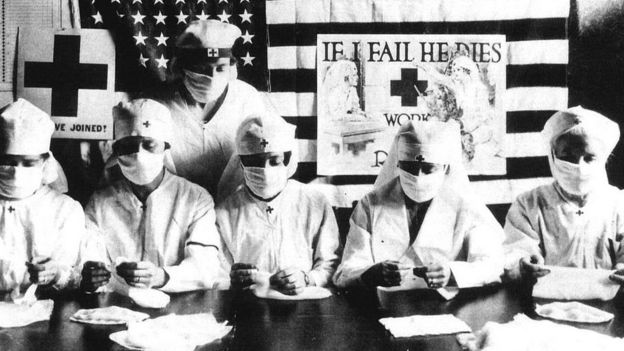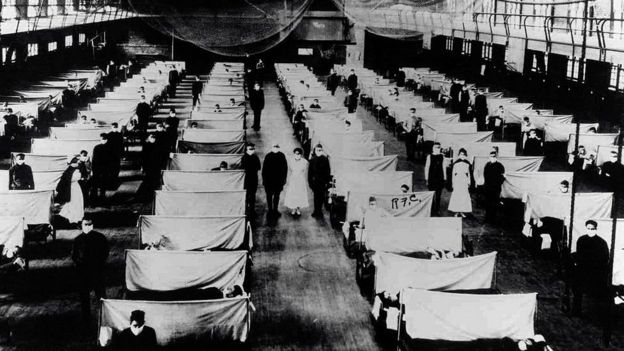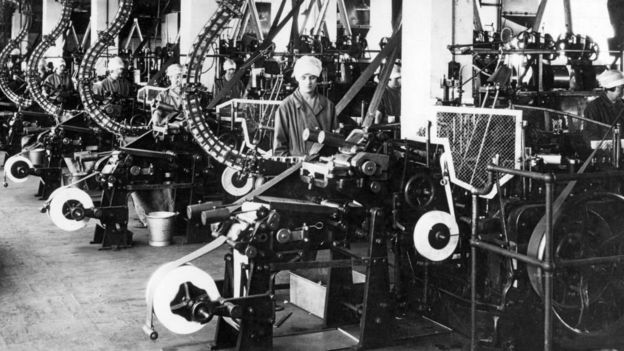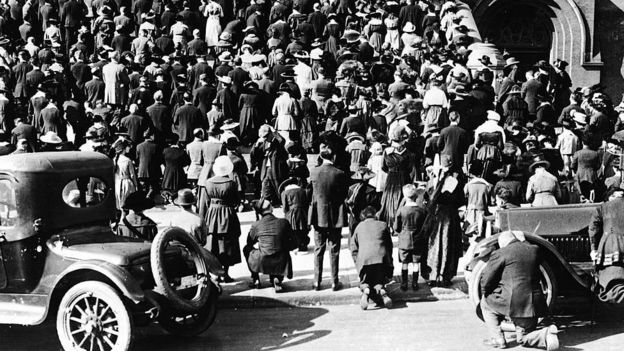 |
Spanish flu: How did the world change after the 1918 global epidemic? |
If you hadn't heard of the global flu pandemic before, now that the corona virus has spread, you probably know that the world became infected with a deadly virus even in the early 20th century.
Known as the 'mother of global epidemics', the epidemic killed between two and 50 million people between 1918 and 1920, in just two years.
Scientists and historians believe that a third of the world's 1.8 billion people were affected by the epidemic.
And in those days the Spanish flu killed more people than it did in World War I, which was coming to an end.
Now that the world is in the throes of the Cowboys-19 crisis, let's take a look back at what the world looked like after the last epidemic, in which everything came to a standstill.
1921, a completely different world
 JTN IMAGES
JTN IMAGES
Of course, much has changed in 100 years.
Medicine and science at that time were much more limited than today to deal with a disease.
Doctors knew that the spread of Spanish flu was caused by germs that could spread from person to person, but they thought that these germs were bacteria, not viruses.
Treatment was also available on a limited scale. The world's first antibiotic was discovered in 1928.
The world's first vaccine against the flu came into being in the 1940s.
Most importantly, there was no universal system of health in the world, and even in rich countries, sewage was considered a waste.
Laura Spini, author and scientist who has written a book on the Spanish flu, says: They had no access at all.
Young and poor
 JTN IMAGES
JTN IMAGES
To make matters worse, the Spanish flu struck in a way that had never been seen before in global flu pandemics, such as the 1889-90 pandemic, which killed more than a million people worldwide.
The majority of its victims were between the ages of 20 and 40, and there were far more males than females. This was probably due to the fact that the epidemic started in the crowded camps on the Western Front and as soon as the houses of the soldiers involved in the First World War were looted, it also brought the epidemic.
Poor countries were also badly affected by the epidemic.
A 2020 study by Faring Bravo, a researcher at Harvard University in the United States, estimates that the Spanish flu affected 1.5 percent of the US population (5.5 million people), compared to 5.2 percent in India (17 million). People) were affected.
Catherine Arnold, author of Pandemic 2018, says that the economic crisis left behind the loss of life caused by World War I and the Spanish flu.
According to him, in many countries, to run a business, work in the fields, get training in various fields, even get married and raise children so that they can take the place of the millions who died, the youth were no more.
"The lack of qualified men has led to a problem called 'spare women', which has left millions of women unable to find a suitable partner," she said.
In women jobs
 JTN IMAGES
JTN IMAGES
Although the Spanish flu did not bring about major changes in society, such as the Black Plague, which ended the feudal system in the 14th century, it did shake the gender balance in many countries.
According to research by Christine Blackburn, a researcher at Texas A&M University, the lack of jobs in the United States has created job opportunities for women.
"By 1920, 21% of employees were women," she says.
That same year, Congress passed the 19th Amendment, which gave American women the right to vote.
According to Blackburn, the 1918 flu affected women's rights in many parts of the world.
Wages also increased due to a shortage of workers.
U.S. government records show that within the industrial sector, the rate rose from 21 cents per hour in 1919 to 56 cents per hour in 1920.
Effects on newborns
 JTN IMAGES
JTN IMAGES
According to the research of scientists, diseases like heart disease were found in more children born during the Spanish flu than children born before or after the epidemic.
According to an analysis conducted in Britain and Brazil, people born in 1918-19 were less likely to enter college and take up regular jobs.
Some theories conclude that the pressure of the global epidemic on the mother may have affected the development of the baby in the womb.
Emotions against colonialism and global cooperation
 JTN IMAGES
JTN IMAGES
By 1918, a century had passed since British rule in India.
There was an outbreak of the Spanish flu in May and it affected the locals more than the British there. Statistics show that the death rate among Hindus considered lower caste was 61.6 per thousand while nine deaths per 1000 among European citizens.
Indian nationalists took advantage of the impression that the British rulers had failed to deal with the crisis properly. In 1919, the magazine 'Young India', published under the auspices of Mahatma Gandhi, slammed the British authorities.
He wrote in his editorial: "The government of any other civilized country would not have shown such incompetence against a very terrible and deadly epidemic as the government of India has done."
 JTN IMAGES
JTN IMAGES
The epidemic also highlighted the need for global cooperation after World War I.
In 1923, the League of Nations, the forerunner of the United Nations, announced the establishment of the 'Health Organization'.
It was a technical or technical body run by medical experts rather than diplomats and who devised a system to deal with global epidemics.
The World Health Organization was established in 1948.
Progress in the field of public health
 JTN IMAGES
JTN IMAGES
The damage caused by the Spanish flu pandemic highlights the need for progress in the field of public health.
Russia was the first country to introduce a central public health system in 1920. Soon after, other countries did the same.
Laura Spaniard writes: 'In 1920, many countries established new health ministries or modernized them.
"It was a direct result of the global epidemic, during which public health officials were either absent from cabinet meetings, or left at the mercy of other departments for money and authority," he said. '
Jennifer Cole, an anthropologist at the Royal Holloway University in London, says the global epidemic and war have sown the seeds of a welfare state in the politics of most parts of the world.
Explaining her point, she says that the provision of welfare came into being against a background of a large number of widows, orphans and the disabled.
"Global epidemics shed light on society," he said. Because of them, the society becomes more equal and just.
Lockdown and social distance worked
 JTN IMAGES
JTN IMAGES
This is the famous story of two cities: the campaign to promote war bonds in the cities to cover the expenses of the ongoing war in September 2018 was in full swing and processions were being held in this regard.
Meanwhile, when the Spanish flu epidemic broke out, the two cities adopted very different approaches. Philadelphia continued the procession as planned, while St. Louis canceled the celebrations.
A month later, more than 10,000 people died in Philadelphia due to the epidemic. The death toll in St. Louis was less than 700.
This difference in the two different attitudes towards the epidemic strategy emerged as an argument in favor of social distance.
An analysis of measures such as the ban on public gatherings in many American cities in 1918, and the closure of schools and places of worship, shows that the death rate remained lower in the cities where this was done immediately.
Analyzing the 1918 lockdown, American economists have concluded from their research that in the cities where these measures were strictly followed, economic recovery also accelerated after the end of the global epidemic.
The forgotten epidemic
 PUBLIC DOMAIN
PUBLIC DOMAIN HANDOUT
HANDOUT
Despite the lessons learned, the Spanish flu has been forgotten in many ways.
One reason for this is the First World War, during which many governments banned the publication of war-related news.
Then our history and literature is also devoid of mention of it.
But Wood-19 has certainly reminded people of that.



No comments:
Post a Comment